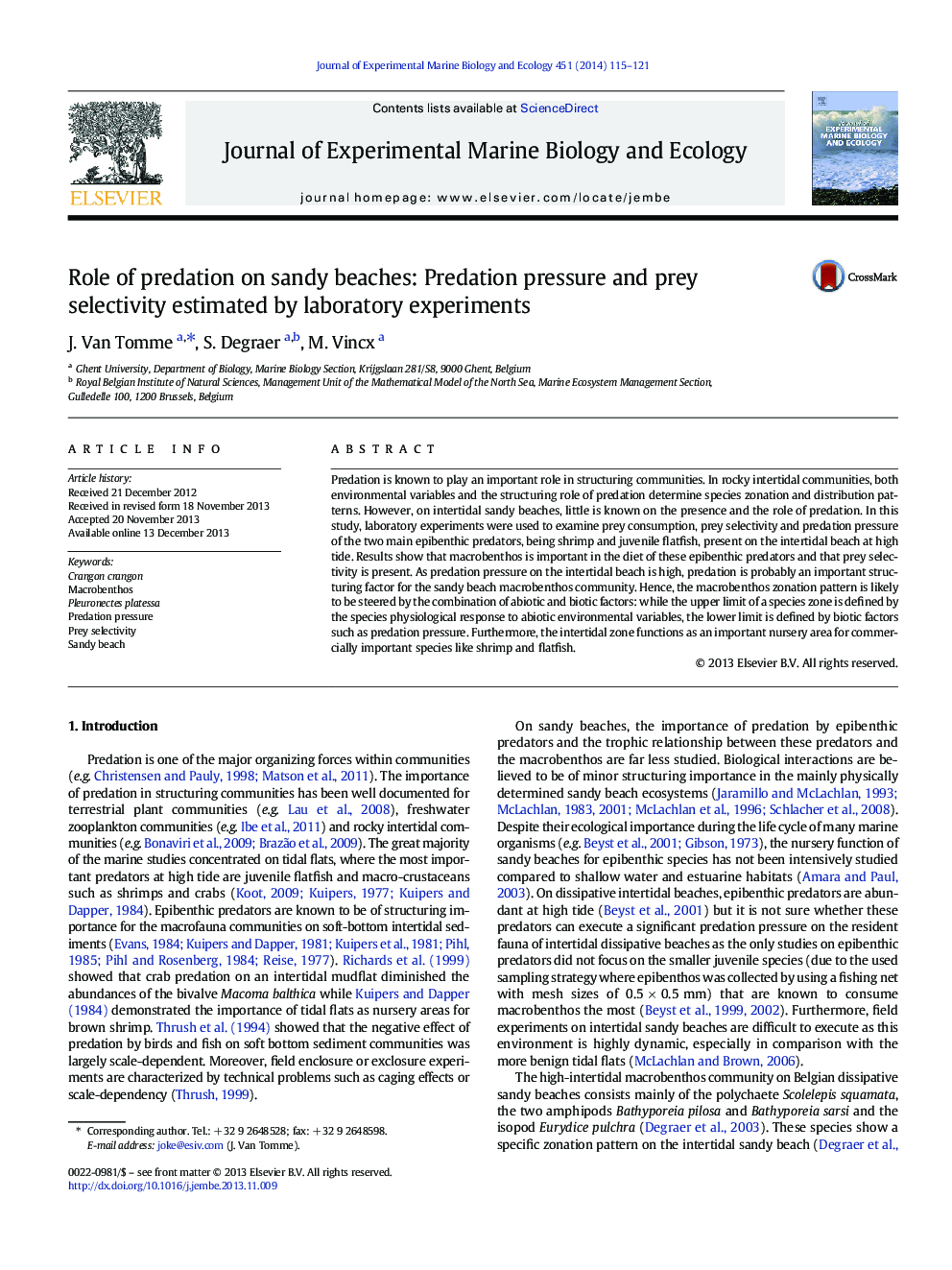| کد مقاله | کد نشریه | سال انتشار | مقاله انگلیسی | نسخه تمام متن |
|---|---|---|---|---|
| 6304158 | 1618424 | 2014 | 7 صفحه PDF | دانلود رایگان |
- Predator-prey relations on dissipative sandy beaches were examined.
- Macrobenthos was consumed by juvenile shrimp and flatfish.
- The sandy beach is important as nursery area for epibenthos.
- The macrobenthos zonation pattern is influenced by the structuring role of predation.
Predation is known to play an important role in structuring communities. In rocky intertidal communities, both environmental variables and the structuring role of predation determine species zonation and distribution patterns. However, on intertidal sandy beaches, little is known on the presence and the role of predation. In this study, laboratory experiments were used to examine prey consumption, prey selectivity and predation pressure of the two main epibenthic predators, being shrimp and juvenile flatfish, present on the intertidal beach at high tide. Results show that macrobenthos is important in the diet of these epibenthic predators and that prey selectivity is present. As predation pressure on the intertidal beach is high, predation is probably an important structuring factor for the sandy beach macrobenthos community. Hence, the macrobenthos zonation pattern is likely to be steered by the combination of abiotic and biotic factors: while the upper limit of a species zone is defined by the species physiological response to abiotic environmental variables, the lower limit is defined by biotic factors such as predation pressure. Furthermore, the intertidal zone functions as an important nursery area for commercially important species like shrimp and flatfish.
Journal: Journal of Experimental Marine Biology and Ecology - Volume 451, February 2014, Pages 115-121
